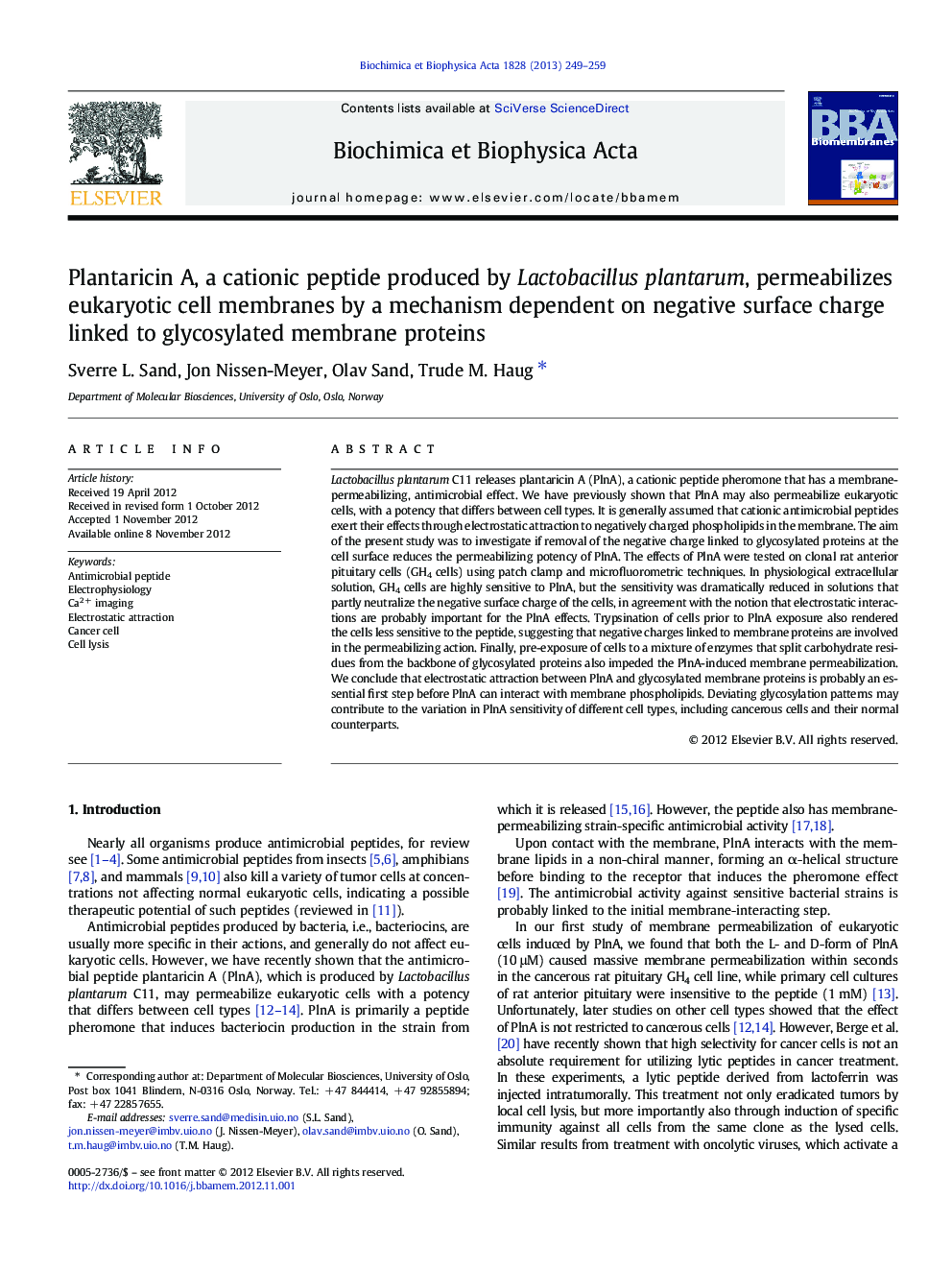| کد مقاله | کد نشریه | سال انتشار | مقاله انگلیسی | نسخه تمام متن |
|---|---|---|---|---|
| 1944359 | 1053210 | 2013 | 11 صفحه PDF | دانلود رایگان |

Lactobacillus plantarum C11 releases plantaricin A (PlnA), a cationic peptide pheromone that has a membrane-permeabilizing, antimicrobial effect. We have previously shown that PlnA may also permeabilize eukaryotic cells, with a potency that differs between cell types. It is generally assumed that cationic antimicrobial peptides exert their effects through electrostatic attraction to negatively charged phospholipids in the membrane. The aim of the present study was to investigate if removal of the negative charge linked to glycosylated proteins at the cell surface reduces the permeabilizing potency of PlnA. The effects of PlnA were tested on clonal rat anterior pituitary cells (GH4 cells) using patch clamp and microfluorometric techniques. In physiological extracellular solution, GH4 cells are highly sensitive to PlnA, but the sensitivity was dramatically reduced in solutions that partly neutralize the negative surface charge of the cells, in agreement with the notion that electrostatic interactions are probably important for the PlnA effects. Trypsination of cells prior to PlnA exposure also rendered the cells less sensitive to the peptide, suggesting that negative charges linked to membrane proteins are involved in the permeabilizing action. Finally, pre-exposure of cells to a mixture of enzymes that split carbohydrate residues from the backbone of glycosylated proteins also impeded the PlnA-induced membrane permeabilization. We conclude that electrostatic attraction between PlnA and glycosylated membrane proteins is probably an essential first step before PlnA can interact with membrane phospholipids. Deviating glycosylation patterns may contribute to the variation in PlnA sensitivity of different cell types, including cancerous cells and their normal counterparts.
Figure optionsDownload high-quality image (319 K)Download as PowerPoint slideHighlights
► A study of eukaryotic membrane permeabilization by an antimicrobial peptide.
► The permeabilization depends on negative surface charge.
► Trypsination of cells prior to PlnA exposure impedes the permeabilization.
► Removal of carbohydrate residues from membrane proteins impedes permeabilization.
► The permeabilization depends on electrostatic attraction to glycosylated proteins.
Journal: Biochimica et Biophysica Acta (BBA) - Biomembranes - Volume 1828, Issue 2, February 2013, Pages 249–259